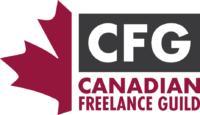3 Social Media Posting Formulas for Service-Based Freelancers
by Robyn Roste

Having an online presence helps potential clients learn more about who you are, what you do and why they should hire you.
And while most freelancers understand this, it’s still easy to overlook social media as an important piece of any online content marketing strategy.
Regardless of its positive or negative impact, social media is one of the main ways we connect with each other. And it can be a significant business tool for freelancers.
For example, in the last week I received an inquiry through LinkedIn messaging, responded to a call for pitches on Twitter and negotiated an assignment using Facebook messenger.
Despite people’s claims of quitting social media, BroadbandSearch estimates, “the average person will spend more than 3.4 million minutes using social media in their lifetime.”
From a marketing perspective, having a social media presence makes sense. This is where people gather in the digital landscape. For many prospects, social media is the first touchpoint they’ll have with a business and it’s where they’re comfortable interacting.
Being present and active on relevant social networks is a fabulous opportunity to help people as well as share your unique knowledge and expertise. Through authentic interactions, you build trust with your followers. People hire people they trust.
Choosing platforms
While I believe freelancers should have profiles set up on all major social networks, I don’t think you should be active everywhere. Instead, I recommend learning which social networks your ideal client prefers and becoming involved in those communities, if it makes sense.
No matter the platform, it’s important to follow the established rules and conventions. Make sure you understand how your chosen platforms work and post unique and appropriate content in each channel. This can take time and energy, so start with one social network and build from there. If you don’t know which platform your target market prefers then you may have to try a few before settling on your primary focus.
Why you want a content strategy
Effective marketing requires a content strategy, and this should extend to social media. The big idea behind a strategy is to create meaningful and sustainable content that attracts your ideal client. It acts as the centrepiece of your marketing efforts and, if done well, helps you become memorable, gives your brand personality and increases your visibility and authority.
When a content strategy is in place, nothing is posted without first being measured against the strategy. It ensures whatever is created either helps prospects get to know you better, builds trust or solves a problem they have. This also protects you from posting things you regret later. How you show up on social media is filtered through the lens of your content strategy so you present a consistent, cohesive persona.
How to create a posting formula
Deciding what to post on social media can be challenging but having a posting formula relieves some of the pressure. I’ll outline three ideas but keep in mind these are general guidelines.
As your relationship with your followers grows, you will adjust your schedule based on how they respond and react to your posts, and what your analytics tell you. If you’re getting good engagement from the right followers then ramp it up. If you’re not, keep modifying until you find something that resonates.
The nine-post plan
This approach is outlined in detail on Social Media Examiner and follows the 4:3:2 rule:
-
- Four posts add value (44%)
- Three posts create connections (33%)
- Two posts promote your services (22%)
While this schedule is based on a nine-image Instagram grid, the approach can work for other platforms as well. It emphasizes building relationships but still allows for some mention of what you offer and how you can help prospects.
The 80/20 plan
I’ve heard this scheduling formula recommended for every social media platform at some point or another and while it’s similar to the nine-post approach it offers more flexibility.
Here’s the gist: 80 per cent of what you post should be adding value and 20 per cent of what you post should be selling. That’s it. One out of every five posts should promote your services and the other four should be helpful and interesting to your ideal client.
The themed-day plan
This method seems to show up the most in Facebook groups but I’ve also seen it on Twitter and in Instagram stories. Themed days mean you create topical posts for specific days and stick to them.
For example, #MotivationMonday, #TastyTuesday, #WordlessWednesday, #ThrowbackThursday, #FollowFriday, #SaturdayShoutOut, #SundayFunday.
You can either piggyback on established themes or create your own. This approach focuses more on creating conversations within a platform than moving people away from social media, but it can be effective with the right content strategy.
More important than which posting formula you choose is ensuring it’s based on a schedule you can maintain.
An effective social media presence that leads to paid work doesn’t happen overnight but instead through optimized social media profiles, on-brand posts and authentic interactions with ideal clients. This is developed through creating and implementing a content strategy with a consistent posting schedule.
Robyn Roste writes about freelancing and social media and is passionate about helping freelancers market themselves.



